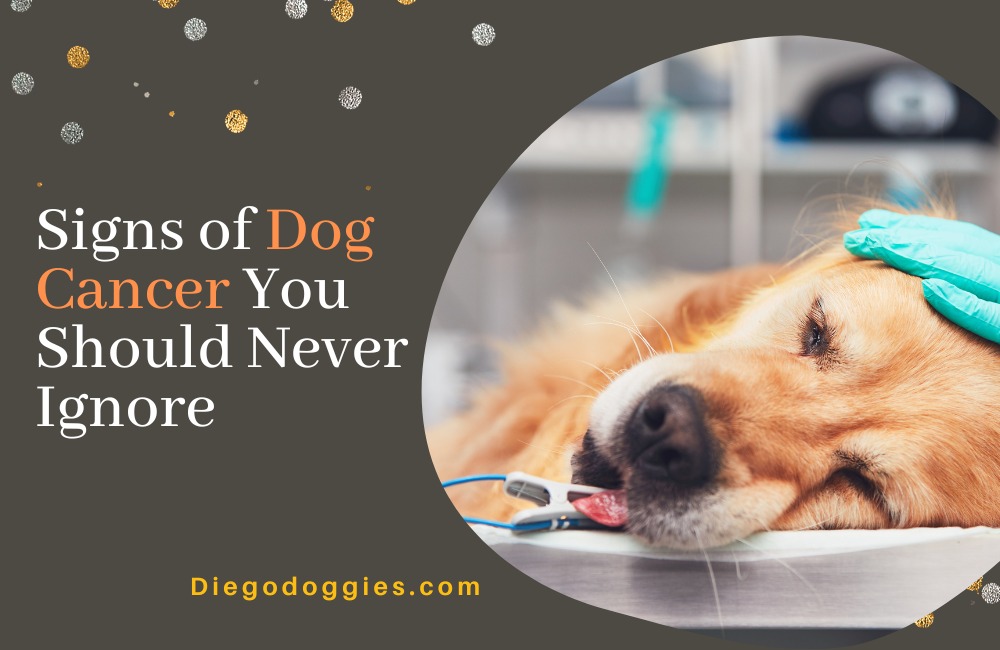Did you know that cancer is the number one cause of death in dogs? It’s true – and it’s important to be aware of the signs of dog cancer so that you can get your pet the treatment they need as soon as possible.
Cause of Dog Cancer
While the exact cause of dog cancer is unknown, there are certain risk factors that may increase a dog’s chances of developing the disease. These include:
- Exposure to chemicals or toxins
- Previous treatment with radiation or chemotherapy
- Inherited genetic mutations
Certain breeds of dogs are also more susceptible to developing cancer than others. For example, Golden Retrievers have one of the highest rates of cancer of any dog breed.
While the cause of dog cancer is largely unknown, there are some things that you can do to help prevent your dog from developing the disease. These include:
- Feeding your dog a nutritious diet
- Avoiding exposure to toxins and chemicals
- Keeping your dog up to date on vaccinations
If you notice any of the following signs of dog cancer, be sure to contact your veterinarian right away:
- A lump or mass that is new or has grown rapidly
- Abnormal bleeding or discharge from any body opening
- Sores that do not heal
- Loss of appetite
- Weight loss
- lethargy or fatigue
- Difficulty breathing
- lameness or stiffness
- change in bathroom habits.
Signs of Dog Cancer You Should Never Ignore is a blog post that discusses the signs and symptoms of dog cancer, as well as possible causes and prevention methods. This information is important for all dog owners, as cancer is one of the leading causes of death in dogs.
Side Effects:
There are a number of side effects that cancer treatment can have on dogs. If your dog is displaying any of these symptoms- Vomiting, Diarrhea, Loss of appetite, Weight loss, lethargy difficulty breathing.
It is important to take them to see a vet as soon as possible. Early detection and treatment of cancer are crucial for the best possible outcome.

Common Signs of Dog Cancer
In this blog post, we will discuss some of the most common signs of dog cancer. If you notice any of these symptoms in your pet, please don’t hesitate to call your veterinarian for an appointment.
1. A lump or mass that is new or has grown rapidly: One of the most common signs of cancer in dogs is the presence of a lump or mass.
2. Abnormal bleeding or discharge from any body opening: Another possible sign of cancer is abnormal bleeding or discharge from any body opening, such as the mouth, nose, or anus.
3. Sores that do not heal: Cancer can also cause sores that do not heal. If you notice a sore on your dog that does not seem to be healing, please contact your veterinarian right away.
4. Loss of appetite: A loss of appetite is another common sign of cancer in dogs. If your dog does not seem to be interested in food, or if they are losing weight, please contact your veterinarian right away.
5. Weight loss: Weight loss is another common sign of cancer in dogs. If your dog is losing weight without changing their diet or exercise routine, please contact your veterinarian right away.
6. Lethargy or fatigue: If your dog seems unusually tired or lethargic, this could be a sign of cancer. If you notice this symptom, please contact your veterinarian right away.
7. Difficulty breathing: Difficulty breathing is another common sign of cancer in dogs. If you notice that your dog is having difficulty breathing, please contact your veterinarian right away.
8. Lameness or stiffness: Lameness or stiffness can also be a sign of cancer in dogs. If you notice that your dog is limping or seems to be in pain, please contact your veterinarian right away.
9. Change in bathroom habits: A change in bathroom habits is another possible sign of cancer. If you notice that your dog is urinating or defecating more frequently, or if there are changes in their stool, please contact your veterinarian right away.
FAQ: Signs of Dog Cancer
Conclusion:
These are just a few of the most common signs of dog cancer. If you notice any of these symptoms, please don’t hesitate to call your veterinarian for an appointment. Early detection is key to successful treatment, so it’s important to be aware of the signs and symptoms of cancer in dogs. Thanks for reading!
Related Contents
- Is Olive Oil Good for Dogs- 15 Surprising Benefits & Uses of Olive Oil for Dogs
- Is Your Dog Barking Excessively And Annoying Your Neighbours?
- My Dog Keeps Sneezing: Causes, Dangers, and Treatment Options
- Old Dogs Peeing And The Urge To Urinate
- Presa Canario vs Cane Corso – Which Breed is Right for You?
- Seven Best Dog Foods for Weight Loss
- The Benefits of Liquid Gold for Dogs
- The Best Dog Toys to Keep Them Busy: Suited for Breed and Environment
- The Top 16 Most Common Dog Questions: Answered
- Top 7 Ways to Build a Stronger Bond with Your Dog
- Top Eight Benefits To Canine Massage
- Top Five Benefits of Microchipping Your Dog
- Treating And Preventing Flea Scabs On Your Dog
- Types of Short-Haired German Shepherds: Which One is Right for You?
- What Can You Put On Your Hairless Dog Breeds For Dry Skin?
- What You Should Do To Become a Responsible Dog Owner


1 thought on “Signs of Dog Cancer You Should Never Ignore”